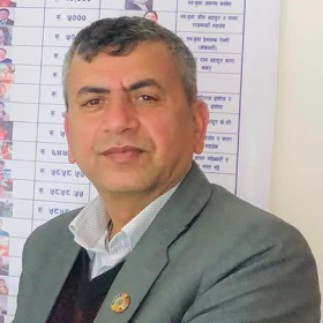Opinion
Sanitation for all
This year’s national sanitation week started with an aim to raise public awareness on the importance
Jhabindra Bhandari
In recent years, sanitation has increasingly emerged as a social movement. The government, development partners, media and civil society are collectively working to improve sanitation coverage. They will achieve this by enhancing community participation, profoundly impacting the health and livelihoods of everyday citizens.
The Interim Constitution also defines access to water as a fundamental right. The government has set a target of achieving basic universal access to water and sanitation by 2017. In between 2000 and 2011, the national sanitation coverage more than doubled from 30 percent to 62 percent, although the overall average increase was only 2.6 percent.
Unequal coverage
Still, disparities in sanitation coverage exist between urban and rural areas and among geographical regions. While sanitation in urban areas increased from 80 to 91 percent over the last decade, the coverage in rural areas rose from 25 to 55 percent. The hills have 75 percent sanitation coverage but this rate drops significantly to 60 percent in the mountains and 49 percent in the Tarai.
More importantly, social inequalities still exist in water and sanitation services. Unlike drinking water coverage, sanitation coverage significantly varies by ethnicity. Therefore, as outlined in Nepal’s recent Human Development Report, access to drinking water was a significant determinant of regional development. Thus, social sector policies need to consider both the geographic and demographic dimensions of human development.
Policy changes
The government has developed several policies and plans in close coordination with development partners and civil society. The recent sanitation and hygiene master plan of 2011 is an example. It harmonises existing sanitation policies and actions to ensure that national targets of sanitation coverage are realistically met in time.
The plan aims to promote active engagement of local bodies in planning and implementation of sanitation campaigns. The effective implementation of sanitation policies and plans depends on commitment and support from a range of stakeholders, who are consistently working in the area of sanitation.
Obstacles to sanitation
Still, some issues, such as poor institutional capacity, inadequate human resources and a lack of multi-sector coordination have been been identified as key obstacles for accelerating the implementation of sanitation plans more comprehensively. Therefore, one of the most important priorities is to ensure effective and efficient implementation of existing policies, strategies and institutional structures.
There are some regional initiatives in South Asia which aim to improve sanitation and hygiene. The 5th South Asian Conference on Sanitation (SACOSAN) in Kathmandu last year was a major landmark in terms of sharing experiences among a range of important stakeholders. These included parliamentarians, senior policymakers, grassroots activists, adolescents, professionals, academics, civil society, development partners, the private sector and the media from across the region.
Indeed, such a regional gathering has been instrumental in enhancing mutual accountability. By developing a common strategy to further strengthen regional cooperation and collaboration with a more pragmatic approach, Nepal has benefits to gain. Moreover, as an important outcome of the SACOSAN, the Kathmandu Declaration renewed joint commitments to make
an open-defecation free South Asia by 2023.
Aside from some issues of universal sanitation and hygiene, we need to recognise that sanitation is a matter of justice and equity, which brings enormous benefits in health, nutrition and education, as recognised by the multi-sector nutrition plan (2013-2017).
Despite some remarkable progress, much more needs to be done to actually increase sanitation coverage by ensuring community participation in creating demand for sanitation services. For instance, campaigns such as soap for hand-washing, use of toilets and other behavioural changes are very effective in promoting sanitation and hygiene in families and communities.
Additionally, partnership with media, civil society and private sector will have synergic outcomes in reaching out to communities for better sanitation. These initiatives should be expanded and scaled up across the country in order to meet the ambitious goal of sanitation for all by 2017.
Bhandari is with the Nutrition and Food Security Secretariat, National Planning Commission. Views are personal




 6.12°C Kathmandu
6.12°C Kathmandu










